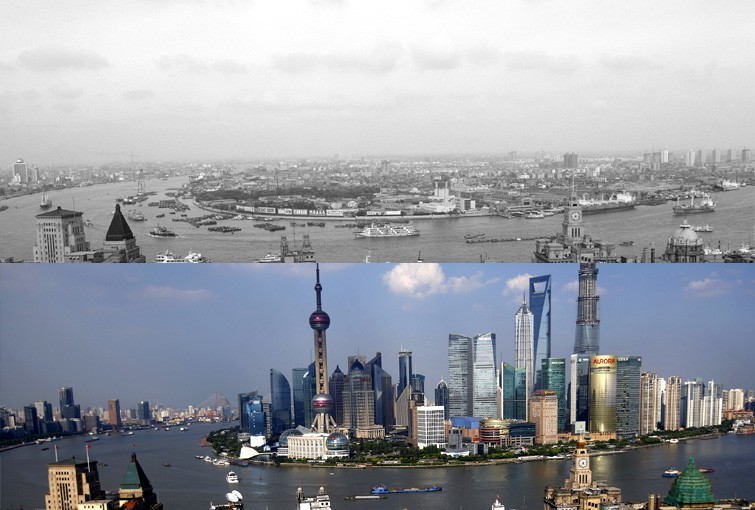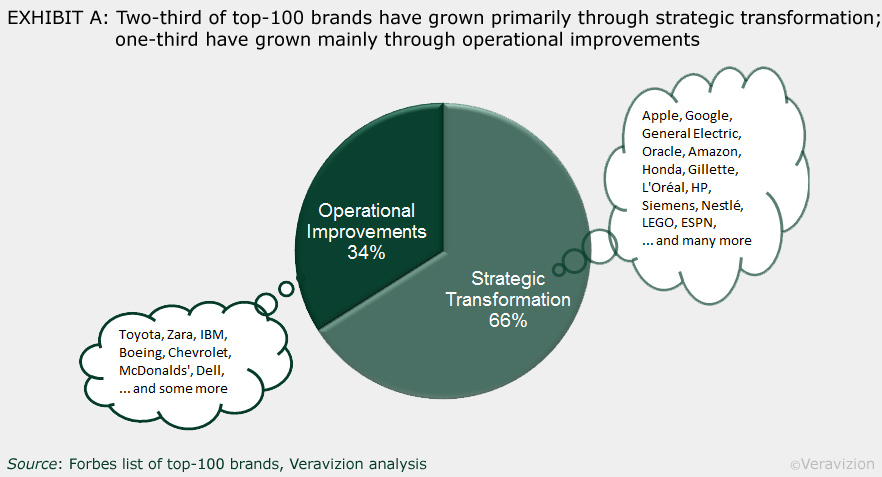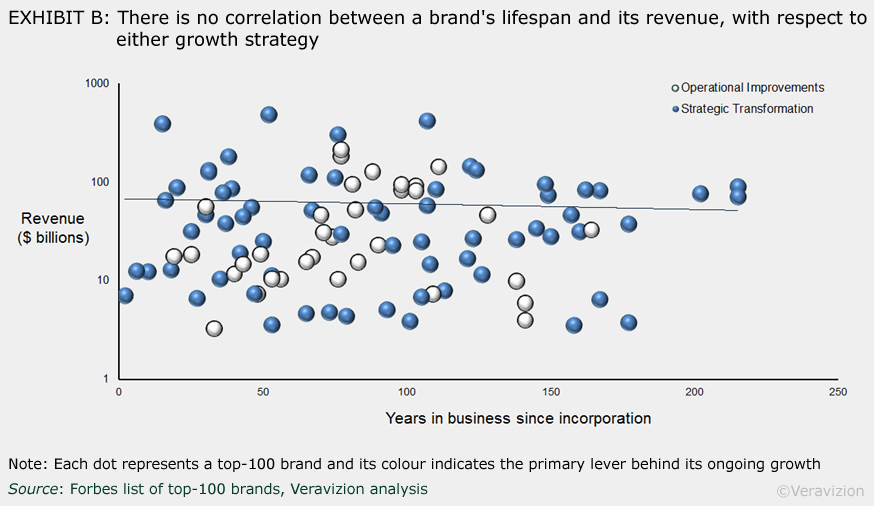In the April edition of Stanford Business Insights, Mark Leslie states that successful enterprises have a ‘Cycle of Life’ which lives through five phases: Product or Service Development during Start-up, Market Entry, Growth, Maturity, and Decline. He says that during the decline phase, revenue slows down and flattens out, margins stabilize at lower levels, operational expenses rise to unsustainable heights, and company spirals into negative growth marked by layoffs, high burn rates, and eventual bankruptcy or liquidation. Mark says that the key to enduring growth, to manage this eventuality, is strategic transformation.
We agree!
When companies are growing for decades, deliberately or not, they tend to undergo some form of transformation, irrespective of how they are growing.
Mark further adds that there’s a moment along the corporate Arc of Life between growth and maturity – a point he calls ‘the sweet spot for optionality’ – when companies should take initiative to steer into uncharted waters (a new line of products, a new business category, a new industry?). In other words, opportunity-driven leaders should attempt to transform the business rather than risk growth by continuing along the well-marked path through operational excellence.
On these two points, we do not agree!
- We do not concur that continuing along the path of operational excellence does not fetch growth.
- We are not of the opinion that the way to strategic transformation is to just change your path to uncharted waters.
Let us explain why:
Regarding the first point, let us hypothesize for a moment that operational excellence does not fetch long term growth. Then how do we explain the growths of the likes of GM and Wal-Mart in the past? After-all Alfred P. Sloan, Jr. and Sam Walton are known to have led their companies on the back of operational improvements.
Moreover, prominent brands like Toyota, McDonald’s, Zara, and Subway have grown primarily through laser-sharp focus on operational efficiencies. Toyota has continually enhanced its assembly-line operations leveraging its legendary Toyota Production System. McDonald’s has continued serving its fast foods with the promise of ‘fast and convenient’ service. Zara has reduced its shopfloor-to-store cycle time of its fashion garments to just five weeks compared to industry average of six months.
We thought that studying the growth strategies of the top-100 brands, which have been growing for decades, would point to the key behind enduring growth of businesses. It will help us prove or disprove the hypothesis.
A quick analysis, as shown in EXHIBIT-A, revealed that more than two-third of the top-100 brands achieved enduring growth through strategic transformation. Interestingly, almost one-third of the top-brands have attained steady growth primarily through operational improvements.
EXHIBIT-B illustrates that there is no obvious correlation between a company’s lifespan and the revenues it earns, with respect to their growth strategies. However, it also establishes that transformation-driven companies seem to out-live and out-earn the operationally-driven companies, especially over the longer term.
So the above two analyses disprove the hypothesis that companies cannot grow with operational excellence; and it also buttresses the theory that strategic transformation is the key to enduring growth.
The second point in a way suggests that business leaders see the sweet spot of optionality as an opportunity to hurtle their company to the next level by changing their course into uncharted waters. But it sounds a bit ambiguous and fuzzy in terms of identifying the sweet spot of optionality almost to the point of being too simplistic.
This is because when you DO transformations for the SAKE of transformation, then you achieve just that – a transformation, without any real benefits from it.
You cannot just APPLY transformation in business as easily as you apply a Fourier or a Laplace transform in engineering mathematics. (Bad analogy I know, but you get the point).
Strategic transformation is a result, and not a set of random actions.
Transformation is an effect, and not a goal.
Transformation HAPPENS over time when you take well-conceived actions, persistently, with single-minded focus on a specific goal.
In our analysis, surprisingly (or unsurprisingly) there was one common theme (or goal) observed across all these 100 leading brands. That theme is Customer-Centricity. Amazon wants to be Earth’s most customer-centric company. Apple demonstrates its customer-centricity in the intuitive products it designs. Gillette develops a different type of razor for each customer segment that has a different shaving habit. Oracle invests strategically into technology that customers are likely to embrace in the future, as it did with its E-Business Suite. There are as many examples of customer centricity as the market-leaders around.
In sum, the point is this: The secret to achieving strategic transformation for enduring growth of your company is to be fiercely customer-centric. When you are passionately customer-focussed in your business, the customer will show you the way to achieving strategic transformation.
In part-II, we will discuss how exactly do you transform your business with customer-centricity as your main strategy.
(Cover photo credit: theatlantic)
Related Posts:
- Why your Business should go Digital?
- What does Digital Maturity really mean?
- Are you survival-oriented or a growth-oriented executive?
Strategic Transformation Part-2 –>
You can also subscribe to our blog – Our Perspectives – to receive interesting articles and tips in email. We would love to read your perspectives and comments on that.
Do follow Veravizion on LinkedIn, Twitter, Facebook, or Google+ to receive easy updates.


